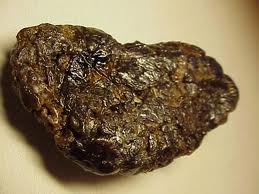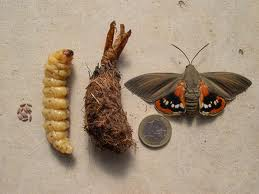The following information is by James Hartley, Director, English Garden Group, an up-market garden centre in Valbonne. Interesting topics I thought for our group. I've put his tips in 4 topics:
- Direct or "radiation frost".
- Winter protection fleece.
- Ease off on fertilisers.
- Frame to protect climbers.
Direct or "radiation frost":
Direct or "radiation frost" is always a danger when the skies are clear, with the warmth remaining on the land's surface after a sunny winter day being rapidly leaked away by radiation into the clear night sky. This effect is so dangerous due to the sheer speed with which the heat is lost: in many cases the temperature of the leaves of the plants will actually drop below the ambient air temperature as heat radiates away. As if this wasn't bad enough, the effect is compounded as the sun bursts out the next morning, rapidly defrosting the leaves and in the process, bursting the cell walls within the leaves.
Winter protection fleece:
If the plants are too large or if it isn't practical to move them, then you have to bring the cover to the plants, and this involves large quantities of winter protection fleece. Winter protection fleece is a breathable fabric that helps to create a small microclimate in the canopy of your plant, keeping the temperature of the leaves several degrees above the ambient temperature, in particular under conditions that could lead to the reverse. The word "breathable" is crucial: never ever use plastic directly over plants as this allows moisture build up and rotting to start in the leaves and outer branches. The membrane sheets provide the protection required against heat radiating away and wind stripping the warmth from the leaves, whilst allowing moisture to permeate out and away each day.
In extreme cases even evergreens and other hardy plants can be affected when the soil becomes frozen and the morning is particularly warm. Roots then find it impossible to lift moisture up to the plant and the plant can die from drought.
Ease off on fertilisers:
Fresh tender leaves are far more susceptible to frost damage than leaves that have been on the plant a while and have had time to harden off. To this end - make sure you ease off on the use of fertilisers containing high levels of nitrogen towards the end of the year as these will push plants into extended vigorous growth - leaving you with foliage that is badly unprepared for the ravages of a cold winter. If you are keen to keep your plants well fed, then opt for balanced feeds later in the season, or better still, feeds with elevated levels of potassium.
Frame to protect climbers:
Attaching fleece to a climber on a wall to stay up for an entire winter can be difficult to do effectively. This problem however can be solved elegantly with a couple of slats of wood. The strips of wood in question should be light, no more than about five or ten centimeters wide and a couple of centimeters thick, and should be as long as is required to be mounted vertically on the wall to match the height of the climbing plant you are trying to cover. Drill two or three holes (top, bottom and centre) in the strip, and hold the strip up to the wall on either side of the climber and mark the wall in position of the holes. The wall can then be drilled and fitted with plugs to take screws. In this way you can screw the wood batons to the wall and use the wood to staple up the fleece. Starting on one side the fleece can be drawn over the plant, stapled on the other side and drawn back across in the same way a couple of times, stapling on each side, to create a protective layer that is both effective and reliably attached. Once winter is over, the fleece can be removed, and the wood strips taken down simply by removing the screws, allowing them to be stored and reused the following year.
A word of advice: be sure to drill the holes identically in each of the wood batons to avoid having to figure out in which position and in which orientation each piece of wood goes the following year.
Winter protection fleece:
If the plants are too large or if it isn't practical to move them, then you have to bring the cover to the plants, and this involves large quantities of winter protection fleece. Winter protection fleece is a breathable fabric that helps to create a small microclimate in the canopy of your plant, keeping the temperature of the leaves several degrees above the ambient temperature, in particular under conditions that could lead to the reverse. The word "breathable" is crucial: never ever use plastic directly over plants as this allows moisture build up and rotting to start in the leaves and outer branches. The membrane sheets provide the protection required against heat radiating away and wind stripping the warmth from the leaves, whilst allowing moisture to permeate out and away each day.
In extreme cases even evergreens and other hardy plants can be affected when the soil becomes frozen and the morning is particularly warm. Roots then find it impossible to lift moisture up to the plant and the plant can die from drought.
Ease off on fertilisers:
Fresh tender leaves are far more susceptible to frost damage than leaves that have been on the plant a while and have had time to harden off. To this end - make sure you ease off on the use of fertilisers containing high levels of nitrogen towards the end of the year as these will push plants into extended vigorous growth - leaving you with foliage that is badly unprepared for the ravages of a cold winter. If you are keen to keep your plants well fed, then opt for balanced feeds later in the season, or better still, feeds with elevated levels of potassium.
Frame to protect climbers:
Attaching fleece to a climber on a wall to stay up for an entire winter can be difficult to do effectively. This problem however can be solved elegantly with a couple of slats of wood. The strips of wood in question should be light, no more than about five or ten centimeters wide and a couple of centimeters thick, and should be as long as is required to be mounted vertically on the wall to match the height of the climbing plant you are trying to cover. Drill two or three holes (top, bottom and centre) in the strip, and hold the strip up to the wall on either side of the climber and mark the wall in position of the holes. The wall can then be drilled and fitted with plugs to take screws. In this way you can screw the wood batons to the wall and use the wood to staple up the fleece. Starting on one side the fleece can be drawn over the plant, stapled on the other side and drawn back across in the same way a couple of times, stapling on each side, to create a protective layer that is both effective and reliably attached. Once winter is over, the fleece can be removed, and the wood strips taken down simply by removing the screws, allowing them to be stored and reused the following year.
A word of advice: be sure to drill the holes identically in each of the wood batons to avoid having to figure out in which position and in which orientation each piece of wood goes the following year.

























































